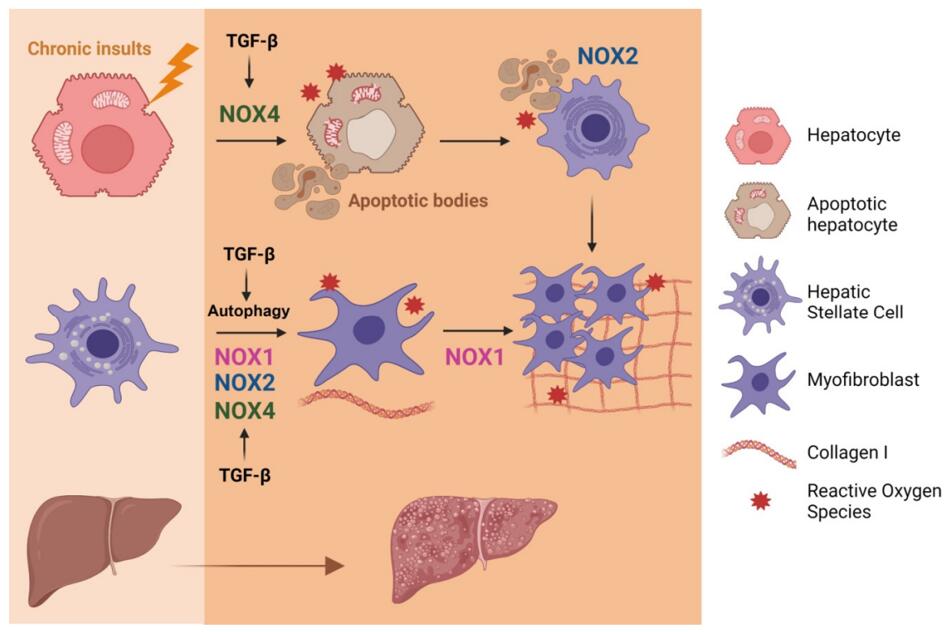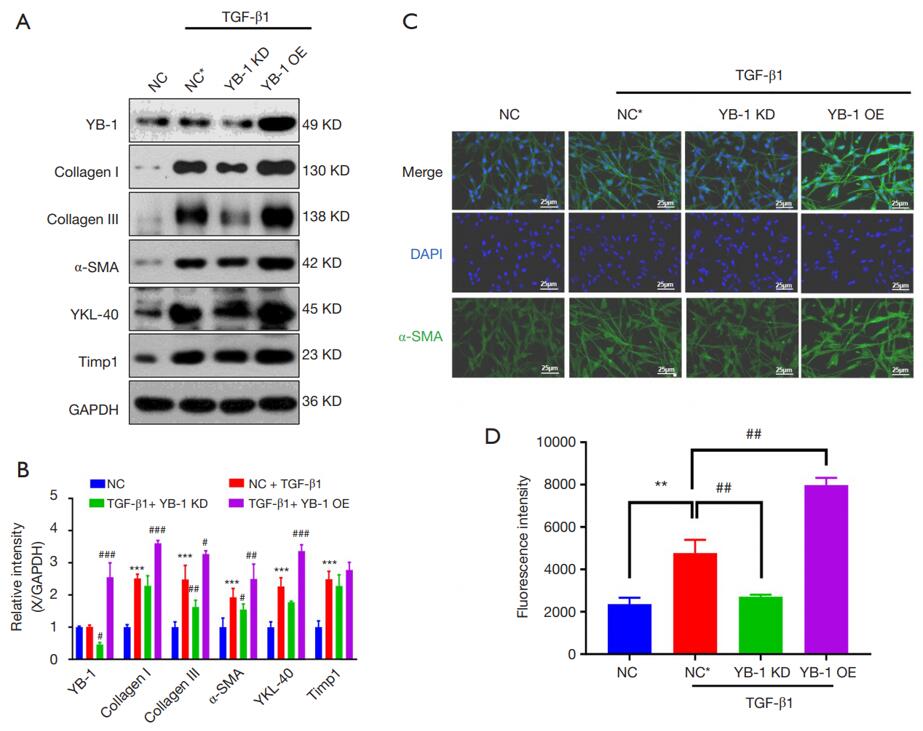Liver fibrosis is a condition characterized by the excessive accumulation of extracellular matrix (ECM) proteins, such as collagen, in the liver tissue. This excessive ECM deposition disrupts the normal architecture of the liver and leads to the formation of scar tissue. Over time, this scarring can progress and result in irreversible damage to the liver.
TGF-β acts as a potent activator of HSCs, leading to their transformation into myofibroblasts, which are responsible for the excessive production of extracellular matrix (ECM) components.
 Figure 1. Involvement of the axis TGF-β/NOX in liver fibrosis. [1]
Figure 1. Involvement of the axis TGF-β/NOX in liver fibrosis. [1]
Understanding and targeting the TGF-β signaling pathway is a focus of research for developing therapeutic strategies to mitigate fibrosis in various organs, including the liver. Inhibitors of TGF-β signaling or modulators of HSC activation are being explored as potential treatments for liver fibrosis. At Creative Biarray, we can customize the service to meet specific research needs, such as using different cell types, concentrations of TGF-β, and duration of treatment. Our team of experienced scientists will work closely with you to design a study plan that meets your requirements and ensures reliable and reproducible results.

Study Examples:
 Figure 2. YB-1 promoted liver fibrosis in a model of TGF-β1–induced HSC. [2]
Figure 2. YB-1 promoted liver fibrosis in a model of TGF-β1–induced HSC. [2]
References:
1. Herranz-Itúrbide, Macarena et al. "The TGF-β/NADPH Oxidases Axis in the Regulation of Liver Cell Biology in Health and Disease." Cells vol. 10,9 2312. 3 Sep. 2021, doi:10.3390/cells10092312
2. Liao, Qiong et al. "Promotion of liver fibrosis by Y-box binding protein 1 via the attenuation of transforming growth factor-beta 3 transcription." Annals of translational medicine vol. 11,6 (2023): 259. doi:10.21037/atm-23-835
Online Inquiry